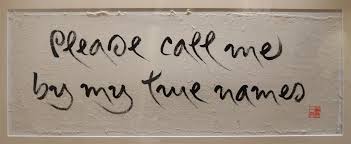
There were a few requests during the November 17 ARISE Sangha webinar for information mentioned by the panelists. Here they are!
To watch a replay of the webinar, please use this link.
(1) Thich Nhat Hanh quote read by Sister Peace at the start of the webinar:
MINDFULNESS MUST BE ENGAGED (From the book, Peace is Every Step)
When I was in Vietnam, so many of our villages were being bombed. Along with my monastic brothers and sisters, I had to decide what to do. Should we continue to practice in our monasteries, or should we leave the meditation halls in order to help the people who were suffering under the bombs?
After careful reflection, we decided to do both – to go out and help people and to do so in mindfulness.
We called it engaged Buddhism.
Mindfulness must be engaged.
Once there is seeing, there must be acting.
Otherwise, what is the use of seeing?
We must be aware of the real problems of the world. Then with mindfulness, we will know what to do and what not to do to be help. If we maintain awareness of our breathing and continue to practice smiling, even in difficult situations, many people, animals. and plants will benefit from our way of doing things.
Are you massaging our Mother Earth every time your foot touches her? Are you planting seeds of joy and peace? I try to do exactly that with every step, and I know that our Mother Earth is most appreciative.
Peace is every step, Shall we continue our journey?
(2) Poem, Please Call Me by My True Names:
From: Peace is Every Step: The Path of Mindfulness in Everyday Life by Thich Nhat Hanh. p. 121.
Please Call Me by My True Names
by Thich Nhat Hanh
Don’t say that I will depart tomorrow —
even today I am still arriving.
Look deeply: every second I am arriving
to be a bud on a Spring branch,
to be a tiny bird, with still-fragile wings,
learning to sing in my new nest,
to be a caterpillar in the heart of a flower,
to be a jewel hiding itself in a stone.
I still arrive, in order to laugh and to cry,
to fear and to hope.
The rhythm of my heart is the birth and death
of all that is alive.
I am the mayfly metamorphosing
on the surface of the river.
And I am the bird
that swoops down to swallow the mayfly.
I am the frog swimming happily
in the clear water of a pond.
And I am the grass-snake
that silently feeds itself on the frog.
I am the child in Uganda, all skin and bones,
my legs as thin as bamboo sticks.
And I am the arms merchant,
selling deadly weapons to Uganda.
I am the twelve-year-old girl,
refugee on a small boat,
who throws herself into the ocean
after being raped by a sea pirate.
And I am the pirate,
my heart not yet capable
of seeing and loving.
I am a member of the politburo,
with plenty of power in my hands.
And I am the man who has to pay
his “debt of blood” to my people
dying slowly in a forced-labor camp.
My joy is like Spring, so warm
it makes flowers bloom all over the Earth.
My pain is like a river of tears,
so vast it fills the four oceans.
Please call me by my true names,
so I can hear all my cries and my laughter at once,
so I can see that my joy and pain are one.
Please call me by my true names,
so I can wake up,
and so the door of my heart
can be left open,
the door of compassion.
From Call Me By My True Names: The Collected Poems of Thich Nhat Hanh
(3) Books on Racial and Collective Trauma
Trauma Resiliency Model® and Community Resiliency Model®
From traumaresourceinstitute.com
The Trauma Resiliency Model® and Community Resiliency Model® are designed to help individuals understand the biology of traumatic stress reactions and learn specific skills to return the body, mind and spirit back to balance after experiencing traumatic events. These skills can awaken the hope that has, for some, been lost after natural and human-made disasters. And yes, we even have an app to help you learn the wellness skills.
Collective Trauma Online Summit
From collectivetraumasummit.com
A global event to explore how to heal personal, intergenerational and collective trauma.
Somatic Experiencing as taught by Peter Levine
From traumahealing.org
Healing Trauma: A Pioneering Program for Restoring the Wisdom of Your Body
by Peter Levine
My Grandmother’s Hands: Racialized Trauma and the Pathway to Mending Our Hearts and Bodies by Resmaa Menakem
(4) Touching the Earth
The practice of Touching the Earth is to return to the Earth, to our roots, to our ancestors, and to recognize that we are not alone but connected to a whole stream of spiritual and blood ancestors. … We touch the earth to let go of the idea that we are separate and to remind us that we are the Earth and part of Life.
Please use this deep practice of ‘Touching the Earth to the Land Ancestors’ as a skillful means that is evolving, a work in progress. If you have additional suggestions for this practice please send us an email.
You can find the text of The Touchings of the Earth here.
Pingback: ARISE Sangha offers our first Webinar – ARISE Sangha